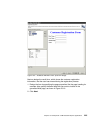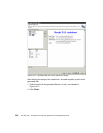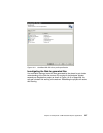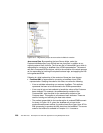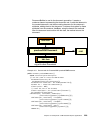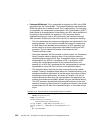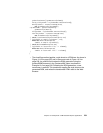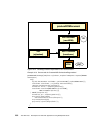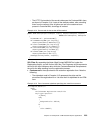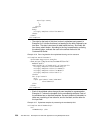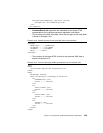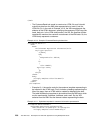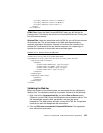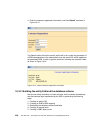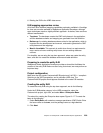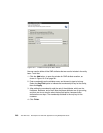
Chapter 10. Development of XML-based Enterprise applications 233
– The HTTP Post method of the servlet references the CustomerXML class,
as shown in Example 10-4. It sets all the attribute values, after extracting
them from the request. After all values are set in the customer bean
present in CustomerXML, showPage is invoked.
Example 10-4 Source code for the servlet doPost method
public void doPost(HttpServletRequest request, HttpServletResponse response)
throws ServletException, IOException
{
CustomerXML xml = getCustomerXML();
xml.setMembership(new java.lang.Long(
request.getParameter("membership")));
xml.setFirstname(new java.lang.String(
request.getParameter("firstName")));
xml.setLastname(new java.lang.String(
request.getParameter("lastName")));
xml.setEmail(new java.lang.String(
request.getParameter("email")));
showPage(resultStylesheet, response);
}
XSL Files: By expanding the folder /Web Content/WEB-INF/xsl, under the
Registration project, you will find two XSL files. The Cutstomer.xsl file represents
the xsl for the input customer data, while the CustomerResult.xsl file represents
the xsl for the data resulting from the registration process:
Customer.xsl is the style sheet for the customer registration form. Note the
following:
– The stylesheet code in Example 10-5 represents the style and the
structure of the registration form. It is clear that it is stylesheet for an HTML
form.
Example 10-5 Part of customer stylesheet specifying the overall form structure
<xsl:template match="/">
<html>
<head>
<title>Customer Registration Form</title>
<style type="text/css">
<


